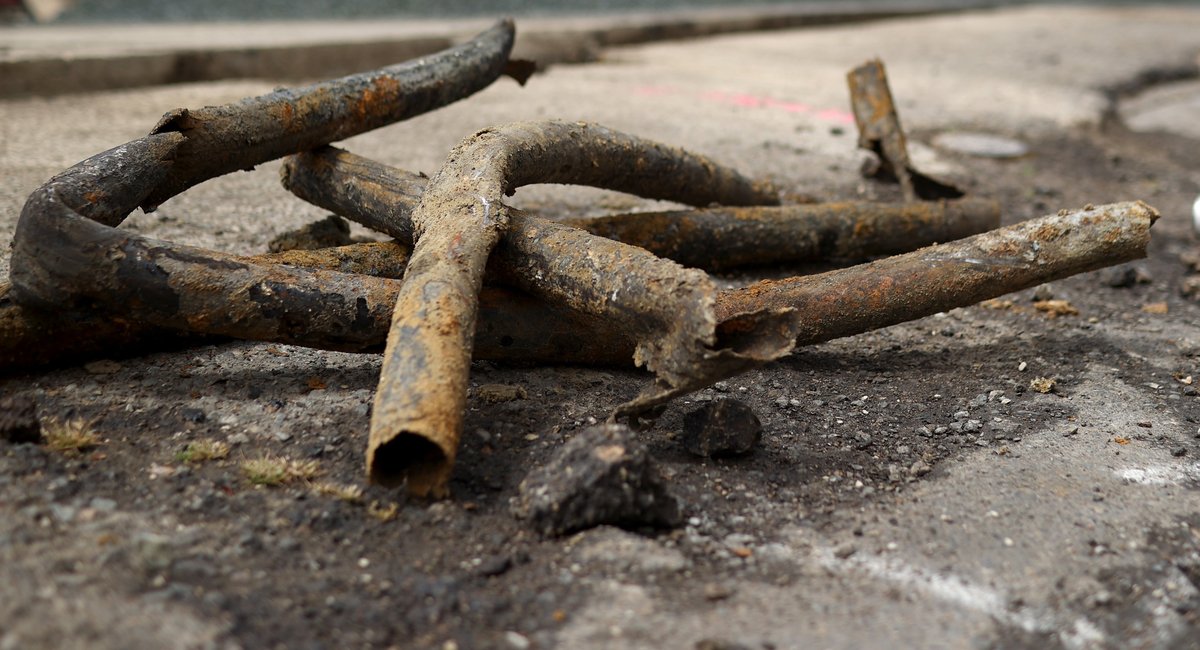Amid mounting pressure from the federal Environmental Protection Agency to replace all lead pipes in the next decade, New York City officials say federal and state aid won’t be enough to cover the work.
Department of Environmental Protection Commissioner Rohit Aggarwala told members of the City Council at a hearing on Tuesday that the city’s share of U.S. Bipartisan Infrastructure Law funding will cover just 7,300 pipe replacements in the next five years, out of more than 150,000 pipes citywide that are made from the toxic metal — or less than 5% of the total.
“This is a great help,” Aggarwala said of the anticipated $120 million in federal funding disbursed by New York state, “but it is far short of the $2 billion needed.” That’s the city’s estimate of how much it would cost to replace all of its lead service lines, at around $15,000 each. The New York state health department has a lower estimate, at between $5,000 and $10,000 per service line.
New data shared by the Department of Environmental Protection on Tuesday suggests that the $120 million won’t be enough to cover pipe replacement costs for all low-income New Yorkers. DEP estimates there are close to 40,000 households with lead service lines that earn $46,000 or less per year each. Replacing all those pipes would cost anywhere from $200 million to $600 million, depending on the price per replacement, according to city officials.
Aggarwala criticized the state government for being stingy with its share of Bipartisan Infrastructure Law dollars. The federal law promised $15 billion to states for lead service line replacement. Aggarwala said the city will receive a total of about $120 million in grants and low-interest loans, or less than a quarter of the federal funds disbursed to the state. That level of funding meant that DEP was unable to finance lead service line replacement projects in parts of the Bronx and much of central Queens in 2022 and 2023, he added.
“We are receiving significantly lower funding per capita than other regions around the state,” Aggarwala said in his City Council testimony. “We have been in active discussions with the state to fight for our fair share.”
It’s not yet clear how the city will make up the difference. Aggarwala said his department isn’t sure if it could use money from New Yorkers’ water bills to fill the gap. Water bills are already set to shoot up by 8.5% on July 1, due in part to a $1.4 billion “rental fee” for access to the city’s water system.
That’s why the city’s Department of Environmental Protection has come out in favor of a new bill that would require homeowners, rather than the city, to replace lead service lines connecting their homes to the city’s water supply. The proposal, sponsored by Councilmember James Gennaro, would fine property owners if they don’t swap out their lead service lines for copper lines in the next 10 years. Aggarwala called the bill “a great start” in his testimony on Tuesday.
Low-income New Yorkers would be eligible for financial aid under the bill, and Aggarwala said the city would finance targeted pipe replacement projects in low-income neighborhoods with an abundance of lead service lines. Other homeowners would be expected to fund the replacements themselves.
New York City’s water is treated with chemicals to reduce the amount of lead that makes its way from pipes into drinking water, but experts say replacing those pipes is the only way to stave off contamination once and for all. Local advocates estimate as many as one-fifth of all New Yorkers may be served by lead service lines. Lead exposure can cause irreversible brain damage and learning problems in children, according to health experts.
At the Council hearing, members of the New York Coalition to End Lead Poisoning argued that the city’s estimate doesn’t account for other sources of funding besides the Bipartisan Infrastructure Law, such as EPA appropriations and municipal bonds. In nearby Newark, New Jersey, city officials used county bonds to fund the replacement of more than 20,000 lead service lines in record time.
Valerie Baron, a member of the coalition and senior attorney for the nonprofit Natural Resources Defense Council’s water safety program, said putting the onus on homeowners could actually entitle the city to an even smaller slice of Bipartisan Infrastructure Law funds than it’s already getting from the state.
“The state will prioritize the places that are taking responsibility” in its distribution of the funding, Baron said. “If [the city is] not on the hook for compliance, they don’t get the funds prioritized in the same way.”
